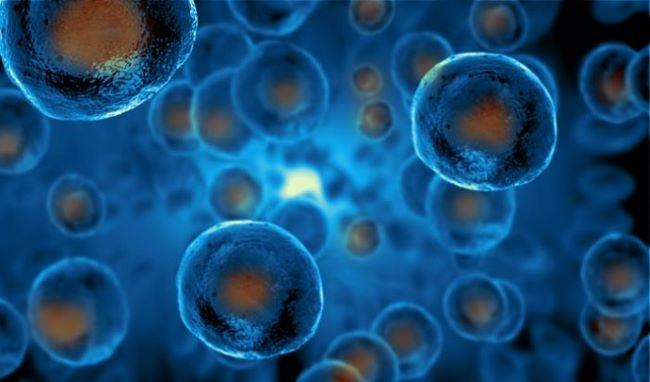Gene therapy deals
As a quick reminder, gene therapy involves the transfer of genetic material, usually in a carrier or vector, into the appropriate cells for uptake of the genetic material. The vector can either be delivered outside the body (ex vivo treatment) where the targeted cells are removed from the patient and administered to cells before they are returned to the patient, or the vectors can be injected into the body (in vivo treatment).
In March this year, Novartis entered into an agreement for Voyager Therapeutics’ TRACER™ adeno-associated virus (AAV) capsids to use in potential gene therapies for three neurological diseases. Under the agreement, Novartis will have the right to evaluate novel capsids from the RNA-driven TRACER™ platform and to exercise options to license capsids for exclusive use in its development of AAV gene therapies directed to three targets. Novartis also has the right to license capsids for two additional disease targets under the same terms. Voyager Therapeutics’ TRACER™ screening platform is identifying improved vectors selected to target desired cells and tissues with greater specificity, at lower doses, and with reduced risk of off-target effects compared to conventional AAVs. Initial data demonstrates TRACER™-derived capsids have enhanced tropism for the central nervous system.
In February 2022, Takeda signed a deal with Code Biotherapeutics, potentially worth up to US$2 billion, to develop gene therapies for rare diseases. The partnership will make use of Code Biotherapeutics’ 3DNA non-viral, synthetic, genetic medicine delivery platform for a liver-directed programme, and also involves conducting additional studies for programmes directed to the central nervous system. 3DNA leverages targeting molecules (such as peptides, antibodies, and small molecules) which bind to cell surface proteins expressed on target cells. After binding to the target cell, the 3DNA is internalised into the cell via a receptor-mediated process. When utilised to deliver gene therapy, the gene construct then localises to the cell nucleus where a tissue specific promoter drives the expression of the desired protein.
PerkinElmer, Inc. announced that its SIRION Biotech business, experienced in gene and cell therapy and vaccine development, and the Centre for Genomic Regulation, an international biomedical research centre located in Barcelona, entered into an agreement to jointly develop new generation AAV vectors for type 1 and type 2 diabetes gene therapy in the pancreas. The end goal is to develop AAV vectors that target specific pancreatic cell types and contain payloads that express therapeutic genes under control of cell-specific regulatory elements. This new approach aims to increase the precision, safety, and efficacy of future AAV-based gene therapies for diabetes.
Novartis has entered into a definitive agreement to acquire all of the outstanding share capital of Gyroscope Therapeutics for US$800 million upfront, gaining the experimental AAV2-based gene therapy GT005. This one-time treatment, which is delivered under the retina, is currently in mid-stage development for patients with geographic atrophy (GA). GA is a chronic, progressive degeneration of the macula and leads to permanent loss of vision.
BioMarin Pharmaceutical Inc. and Skyline Therapeutics announced a multi-year global strategic collaboration for the discovery, development, and commercialisation of AAV gene therapies to treat genetic cardiovascular diseases. The partnership will leverage Skyline Therapeutics’ AAV gene therapy platform to develop innovative gene therapies, with a focus on genetic dilated cardiomyopathies, a group of progressively advancing, devastating diseases where the ventricles of the heart dilate and cannot efficiently pump blood. There are currently no targeted treatment options.
Astellas Pharma Inc is teaming up with Dyno Therapeutics to develop next-generation AAV vectors for gene therapy directed to skeletal and cardiac muscle. The partnership will rely on Dyno Therapeutics’ AI-based CapsidMap™ platform to create AAV capsids with optimised tissue targeting and immune-evading properties, while also improving packaging capacity and manufacturability. Under the agreed terms, Dyno Therapeutics will design novel AAV capsids with improved functional properties, while Astellas Pharma Inc will oversee preclinical, clinical, and commercialisation activities, including manufacturing, of gene therapy candidates using the capsids.
Spark Therapeutics, a member of the Roche Group, and CombiGene announced the signing of an exclusive collaboration and licensing agreement for CombiGene’s CG01 project, a gene therapy which aims to treat drug resistant focal epilepsy.
The agreement provides Spark Therapeutics with an exclusive, worldwide licence to develop, manufacture, and commercialise CG01. CombiGene will continue to execute certain aspects of the preclinical programme in collaboration with Spark Therapeutics.
Epilepsy is a major global medical problem and CG01 is a unique gene therapy candidate aimed at this large patient population.
New approved ex vivo treatment
In February of this year, it was reported that the NHS had struck a confidential deal for what is thought to be the most expensive drug developed to date. Orchard Therapeutics’ gene therapy Libmeldy™ is used to treat an extremely rare condition, metachromatic leukodystrophy (MLD), which causes severe damage to a child’s nervous system and organs. Around five babies are born with the disorder in England every year.
MLD is a rare inherited disorder in which there is a mutation in a gene needed to make an enzyme called arylsulfatase A (ARSA), which breaks down substances called sulfatides. As a result, sulfatides build up and damage the nervous system and other organs, causing symptoms such as walking difficulties, gradual mental deterioration, and eventual death.
The active substance in Libmeldy™ is stem cells (CD34+ cells), derived from the patient’s own bone marrow or blood, that have been modified via a lentiviral vector to contain a copy of the gene to make ARSA and can then divide to produce other sorts of blood cells. The one-off treatment has a list price of £2.8 million but can be offered on the NHS after the health service negotiated a confidential discount.
New clinical trials
LEXEO Therapeutics, a clinical-stage gene therapy company advancing a diverse pipeline of AAV-based gene therapy candidates for genetically defined cardiovascular and central nervous system diseases, announced that the United States’ Food and Drug Administration (FDA) cleared its Investigational New Drug (IND) application for LX2006. LX2006 is an AAV-based gene therapy candidate designed to intravenously deliver a functional frataxin gene for the treatment of Friedreich’s ataxia cardiomyopathy via restoration of mitochondrial function in myocardial cells.
uniQure announced the dosing of the first two patients in its European clinical trial of AMT-130, a potential one-time gene therapy approach for the treatment of Huntington’s disease. The clinical trial is taking place at several sites in Poland, the UK, and Germany. AMT-130 is uniQure’s first central nervous system focused gene therapy product consisting of an AAV5 vector carrying an artificial micro-RNA specifically tailored to silence the huntingtin gene. Using AAV vectors to deliver micro-RNAs directly to the brain for non-selective knockdown of the huntingtin gene represents a highly innovative and promising approach to treating devastating Huntington’s disease.
SwanBio Therapeutics, a gene therapy company advancing AAV-based therapies for the treatment of genetically defined neurological conditions, announced that its IND application for its lead candidate, SBT101 for the treatment of adrenomyeloneuropathy (AMN), was cleared by the FDA. SBT101 is the first AAV-based gene therapy in development specifically designed for people living with AMN, an adult-onset degenerative spinal cord disease caused by mutations in the ABCD1 gene.
Cell therapy news
Chimeric antigen receptor (CAR) T-cell therapy works by genetically engineering an individual’s T-cells to recognise and destroy cancer cells.
In February 2022, it was reported in Nature that two of the first patients to be treated with such therapy still possess cancer-killing cells a decade later with no sign of their illness returning. Both patients were suffering from chronic lymphocytic leukaemia when they had CAR T-cell therapy in 2010, and achieved complete remission within months of treatment, meaning all signs and symptoms of their leukaemia disappeared. When the researchers examined the patients’ blood, they could still identify CAR T-cells that were capable of proliferating and killing cancer cells. This promising finding suggests CAR T-cell therapy may constitute a “cure” for certain blood cancers.




